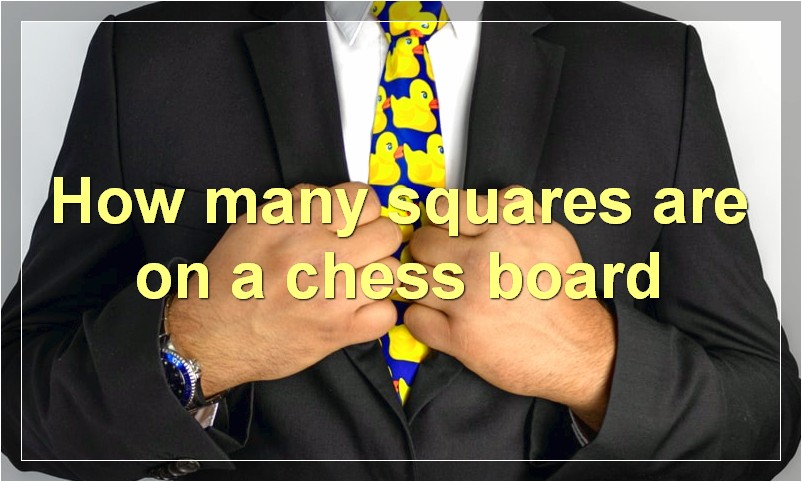There are many benefits to incorporating cable flies into your workout routine. They target muscles that other exercises might not, and they’re a great way to mix up your workouts. But before you start using cable flies in your workouts, it’s important to understand the basics. This article will teach you how to do cable flies, as well as some variations.
What is a cable fly?
A cable fly is a type of resistance exercise that primarily targets the chest muscles. It can be performed with a variety of equipment, but is most commonly done with a cable machine. The exercise is performed by pulling the handles of the machine away from each other, similar to a traditional flye motion.
Cable flies are a great way to build strength and muscle mass in the chest, as they allow you to use heavier weights than you could with dumbbells or bodyweight alone. They are also a versatile exercise, as they can be done with a variety of grips and angles to target different areas of the chest.
If you’re looking for a new exercise to add to your chest workout, give cable flies a try!
What are the benefits of doing a cable fly?

A cable fly is a great way to work your pecs and get a good chest workout. Here are some benefits of doing a cable fly:
1. You can adjust the resistance to match your strength level.
2. Cable flies are a great way to work your stabilizer muscles.
3. You can do them anywhere there is a cable machine.
4. They are a great alternative to dumbbell flies.
5. You can add variety to your chest workout routine.
How do you properly execute a cable fly?
The cable fly is a popular exercise for targeting the chest muscles, but it’s also one of the most commonly mis executed exercises. This is usually due to incorrect form, which can lead to ineffective results and even injury. So how do you properly execute a cable fly?
First, start by adjusting the cables on a pulley machine so they’re at shoulder level. You’ll then want to grab each handle with an overhand grip, making sure your palms are facing each other. From here, step forward so there’s tension on the cables and your arms are extended straight out in front of you. This is your starting position.
To execute the movement, simply bring your hands together in a hugging motion while keeping your elbows slightly bent. Once your hands meet in the middle, pause for a count of two before slowly returning to the starting position. Remember to keep your core engaged throughout the entire movement to avoid swinging your torso and using momentum.
If done correctly, the cable fly is an excellent exercise for building strength and definition in the chest muscles. However, as with any exercise, be sure to use proper form to avoid injury and get the most out of the movement.
What are some variations of the cable fly?
There are a few variations of the cable fly that can be performed in order to target different muscle groups. The first variation is the high-to-low cable fly, which targets the upper pecs. To perform this exercise, start by attaching two single-handled cables to a high pulley. Then, grab each handle with your palms facing each other and step forward so that there is tension on the cables. From here, simply bring your hands together in front of your chest and squeeze your pecs before returning to the starting position.
The second variation is the low-to-high cable fly, which targets the lower pecs. To perform this exercise, start by attaching two single-handled cables to a low pulley. Then, grab each handle with your palms facing each other and step forward so that there is tension on the cables. From here, simply bring your hands together in front of your chest and squeeze your pecs before returning to the starting position.
The third variation is the incline cable fly, which targets the upper pecs. To perform this exercise, start by attaching two single-handled cables to an incline bench press station. Then, grab each handle with your palms facing each other and lie back on the bench so that there is tension on the cables. From here, simply bring your hands together in front of your chest and squeeze your pecs before returning to the starting position.
The fourth and final variation is the decline cable fly, which targets the lower pecs. To perform this exercise, start by attaching two single-handled cables to a decline bench press station. Then, grab each handle with your palms facing each other and lie back on the bench so that there is tension on the cables. From here, simply bring your hands together in front of your chest and squeeze your pecs before returning to the starting position.
What is the most effective way to perform a cable fly?
The most effective way to perform a cable fly is by using a weight that is comfortable for you to lift and using a slow and controlled motion. Start by standing with your feet shoulder-width apart and your knees slightly bent. Grab the handles of the cables and pull them up to your chest, keeping your elbows close to your body. Slowly lower the weights back down to the starting position and repeat.
What is the best weight to use for a cable fly?

The best weight to use for a cable fly depends on your individual fitness level and goals. If you are new to weightlifting, start with a lower weight and gradually increase the amount of weight you lift as you become more comfortable with the exercise. If your goal is to build muscle, heavier weights will be needed. Choose a weight that allows you to complete the desired number of repetitions with good form.
What is the best form to use when doing a cable fly?
There are a few things to consider when choosing the best form to use when doing a cable fly. The first is the type of equipment you are using. If you are using a cable machine, you will want to use a straight-arm fly. If you are using dumbbells, you can use either a straight-arm fly or a bent-over fly. The second thing to consider is your range of motion. If you have a limited range of motion, you will want to use a bent-over fly. This will allow you to get a full stretch in your pecs. Third, consider the weight you are using. If you are using a heavy weight, you will want to use a straight-arm fly. This will help you keep good form and avoid injury.
What are some tips for doing a cable fly?
Cable flyes are a great way to work your pecs and get a pump, but they’re also one of the most commonly misused exercises in the gym. Here are four tips to make sure you’re doing them right.
1. Don’t use too much weight.
The biggest mistake people make with cable flyes is using too much weight. This not only puts unnecessary stress on your joints, but it also takes the focus off of your pecs and puts it on your delts and triceps. As a general rule of thumb, you should be using about 50% of the weight you would use for a bench press.
2. Keep your elbows slightly bent.
If you keep your elbows locked out, you’re not only putting unnecessary stress on your elbow joints, but you’re also taking the focus off of your pecs. Instead, keep your elbows slightly bent throughout the entire range of motion.
3. Use a full range of motion.
Partial reps might be good for ego purposes, but they’re not doing much for your chest development. Make sure you’re using a full range of motion by lowering the weight until your elbows are at 90 degrees and then pressing back up until your arms are straight.
4. Don’t arch your back.
This is a common mistake people make when doing any sort of pressing movement. Arching your back takes the tension off of your pecs and puts it on your lower back. Not only is this dangerous, but it’s also ineffective for building muscle. Instead, keep a slight arch in your lower back throughout the entire exercise.
How often should you do a cable fly?
How often should you do a cable fly? This is a question that many people ask when they are looking to add some variety to their workout routine. The answer to this question depends on your fitness goals and your current workout routine. If you are looking to add muscle mass, then you should do cable flies two to three times per week. If you are looking to tone your muscles and improve your cardiovascular health, then you should do cable flies three to four times per week.
How long should you do a cable fly for each session?
When it comes to working out, there are a lot of different variables that can affect your results. One of the most important variables is the length of time that you spend performing each exercise.
If you’re wondering how long you should do a cable fly for each session, there are a few things to keep in mind. First, the type of cable fly you’re doing will have an impact on the amount of time you should spend doing it. For example, if you’re doing a traditional cable fly, you’ll likely want to do it for a longer period of time than if you’re doing a standing cable fly.
Second, the intensity of your workout will also play a role in how long you should do a particular exercise. If you’re looking to really push yourself and get the most out of your workout, you’ll want to increase the amount of time you spend doing each exercise. However, if you’re just trying to maintain your current level of fitness, you can probably get away with shorter workouts.
Finally, it’s important to listen to your body and see how it responds to different exercises. Everyone is different and some people may find that they need to shorten or lengthen their workouts based on how their bodies feel.
Overall, there’s no one-size-fits-all answer to the question of how long you should do a cable fly for each session. However, by keeping the above factors in mind, you can tailor your workouts to fit your specific needs and goals.




